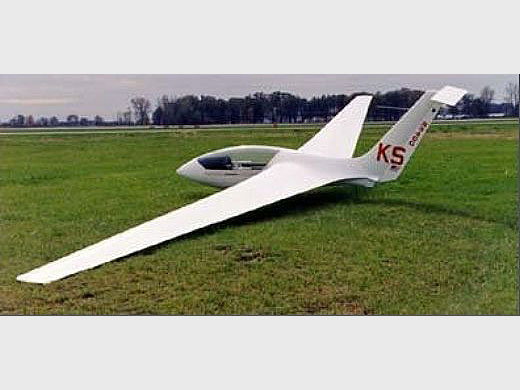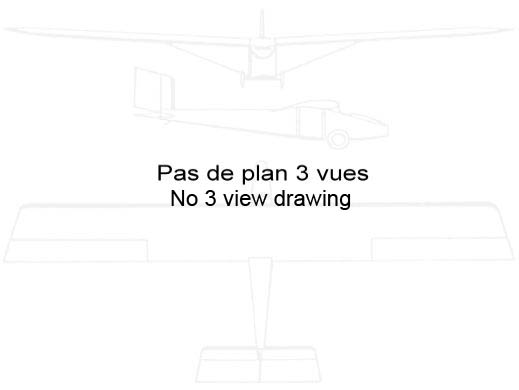
Genesis 2
| DONNÉES GÉNÉRALES |
| Année du premier vol (ou de design, si seul projet) |
1997 |
| Pays | USA |
| Designer(s) | MARSKE, Jim & RONCZ, John |
| Premier constructeur | Group Genesis |
| Type d'appareil | Planeur |
| Fonction | -- |
| SPÉCIFICATIONS TECHNIQUES |
| Envergure | -- |
| Longueur | -- |
| Hauteur | -- |
| Allongement | -- |
| Surface alaire | -- |
| Profil aile | -- |
| Masse à vide | -- |
| Masse maxi | -- |
| Charge alaire | -- |
| Vitesse mini | -- |
| Vitesse maxi | -- |
| Finesse maxi | |
| Taux de chute mini | -- |
| Nb sièges | 1 |
| Structure | -- |
AUTRES INFORMATIONS
| Constructeur(s) |
| ||||||
| Infos techniques | -- | ||||||
| Histoire résumée | The Genesis is a Standard Class Sailplane designed to give stability from a positive pitch moment built into the wing, thus avoiding the need for the usual large tailplane required to counteract the negative pitch stability in normal wing configurations. This results in reduced drag from a much smaller fuselage and tailplane giving less wetted area. The prototype Genesis 1 first flew in 1993. The design provides for automatic control hookups, and a ballistic recovery parachute is intended to be fitted as standard. Kits and complete airframes are to be produced by Sportina Aviacija in Lithuania, the builder of the LAK-12. Specifications are for the prototype Genesis 1 as designed : on completion, empty weight was substantially greater. The production version, Genesis 2, is expected to bring empty weight back to close to that predicted for the prototype. Other refinements incorporated as a result of prototype flight testing include a change to the aerodynamic twist to the wing, a modified tip airfoil section and a retractable nose wheel. Message clipped from the rec.aviation.soaring newsgroup: Hello Everyone. Here's the news we've been waiting for, direct from the Republic of Lithuania: On Friday 7 November 1997 three high tow were successfully completed with the first new Genesis 2. Both factory test pilots flew today and were unanimous in their prase of the flying qualities. According to them: Aileron force are very low, roll rate is about 3.5 seconds from a 45 to 45 degree bank at 50 knots (a full second better than the G1 prototype). Coordination is very normal and was excellent during the 45 to 45 roll maneuver. Rudder pressures are light (even with the tip spoilers now connected to the rudder). Pitch forces are light. Tow position is easy to hold on 50 meter tow rope. Dive brakes are very effective. Cockpit visibility is very good. Landing gear retracts easily. Placement of cockpit controls is good. Cockpit visibility is very good. Flying from our grass field, which is very rough, showed that the spring rate of the nose wheel may need to be increased. Flights will be conducted from a hard surface runway next week to see how it behaves there. More reports will follow when I return 17 November from my vist to Lithuania. I hope they let me fly. Regards, Greg Crook | ||||||
| Liens personnalités | Pas de personnalité associée. |
SOURCES DOCUMENTAIRES
| Liens WEB | Site : Site de Günther Hennig . 16 photos + plan 3 vues. (2009-10-29 CL) Site : 100 Jahre Nuflügel /A century of flying wings de Klaus Niegratschka . Une photo. (2009-10-29 CL) Site : Nuricom (Klaus Niegratschka) . Plan 3 vues. (2011-04-13 CL) |
| Livres | Sailplanes 1965-2000 par SIMONS, Martin (2005) [p. 245. ]. |

Team J2mcL © 2003 -
- Pages optimisées pour Mozilla Firefox

